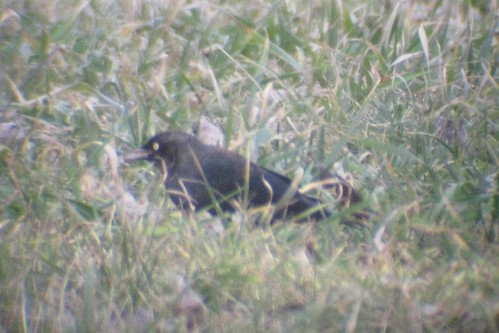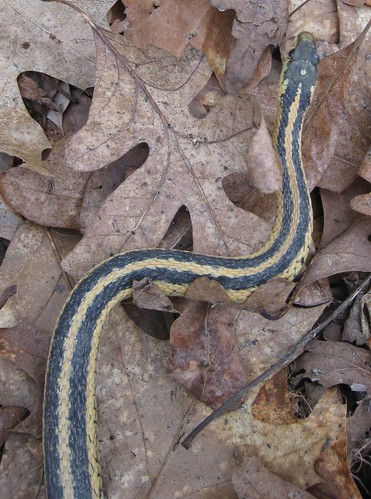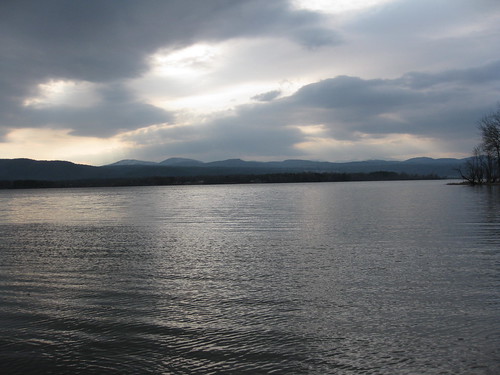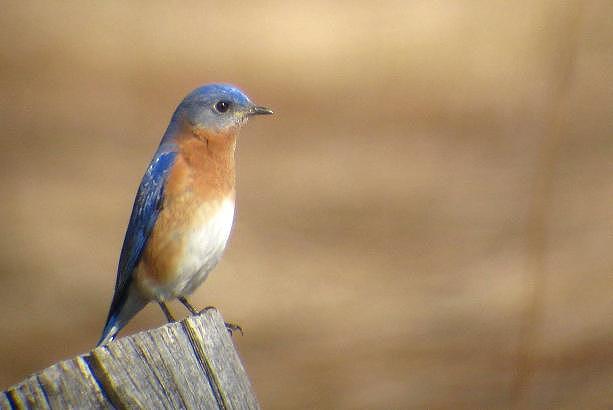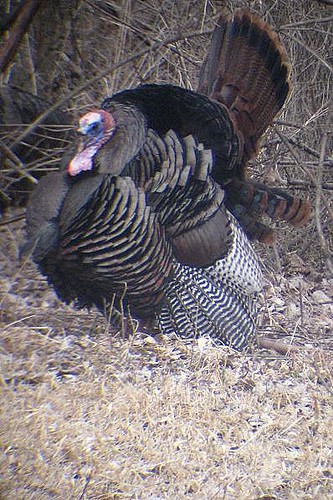I took a trip to Groton State Forest today to monitor the Peregrine Falcons that nest there. Marshfield Mountain, the cliffs where the Falcons nest, was one of three sites where they first started releasing young Peregrines as part of a reintroduction program in the early-mid 1980's. Since that time, the number of nesting pairs has gone from 1 nesting pair in 1984 to a record high of 38 pairs in 2009.
It is a really nice hike in to a small fen with a giant glacial erratic that you can climb up on to view the cliffs. Along the hike in, some sightings included Brown Creepers, 3 Ruffed Grouse, and the first Winter Wren of the year.
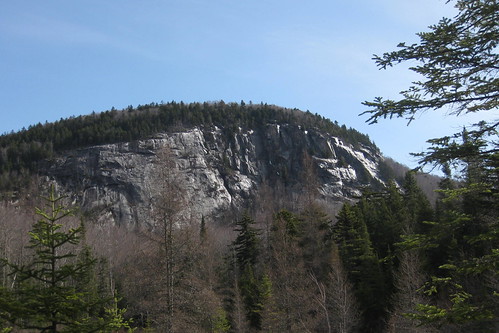
Upon arriving at the cliffs, I climbed the slippery boulder and set up to start monitoring. Within eight minutes, the first falcon showed up. The Audubon Society currently administers the Peregrine monitoring. Below is a sample of my field notes:
9:08 First Peregrine seen flying over/around cliffs. Lands in favorite snag at top and begins preening.
9:17 Wailing call heard briefly (3 sec.) Preening continued.
9:36 Second Peregrine arrives and lands in favorite snag carring prey. Prey appeared to be a blackbird. After a few moments, second Peregrine leaves favorite snag with prey and flies to top of another nearby tree. Second Peregrine begins plucking feathers from prey and is also seen eating some. First Peregrine remains on favorite snag.
On the way out, the birds were quiet and the temperature had increased. Snow that contained coyote tracks on the way in had melted away to reveal mud with moose tracks that had been hidden beneath.
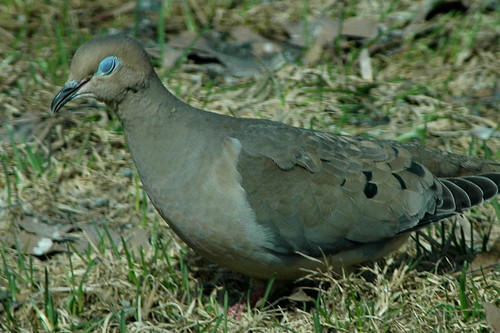
As I arrived back at the Nature Center, a I found a few Mourning Doves blocking the drive way. I caught this one mid-blink! Check out the pale blue eyelids.
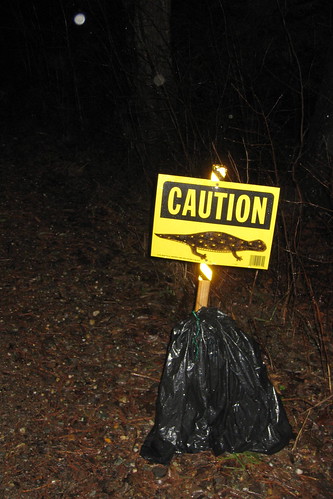
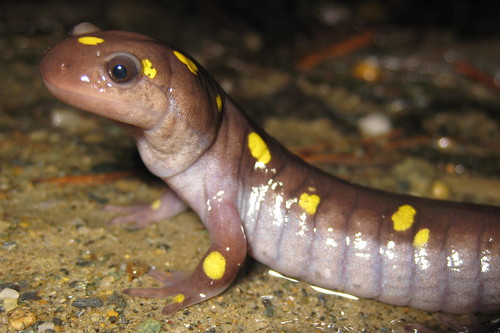
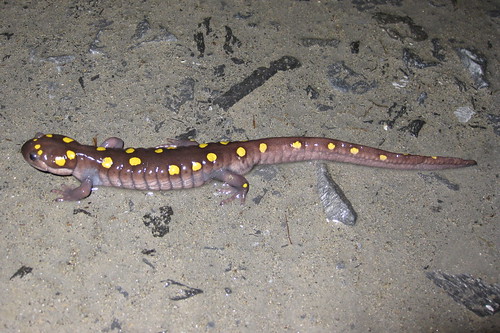



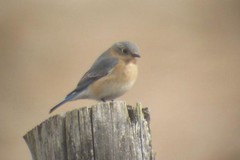
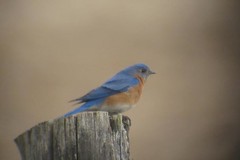 Since I've worked at NBNC, Bluebirds have came each spring to check out the nest boxes and moved on. This year, the male showed up early and was joined on Friday by a female! The two were both observed today, with one bird almost always perched on a favored nest box. At one point, the male (bottom) and female (top) switched spots between a post and the box.
Since I've worked at NBNC, Bluebirds have came each spring to check out the nest boxes and moved on. This year, the male showed up early and was joined on Friday by a female! The two were both observed today, with one bird almost always perched on a favored nest box. At one point, the male (bottom) and female (top) switched spots between a post and the box.

